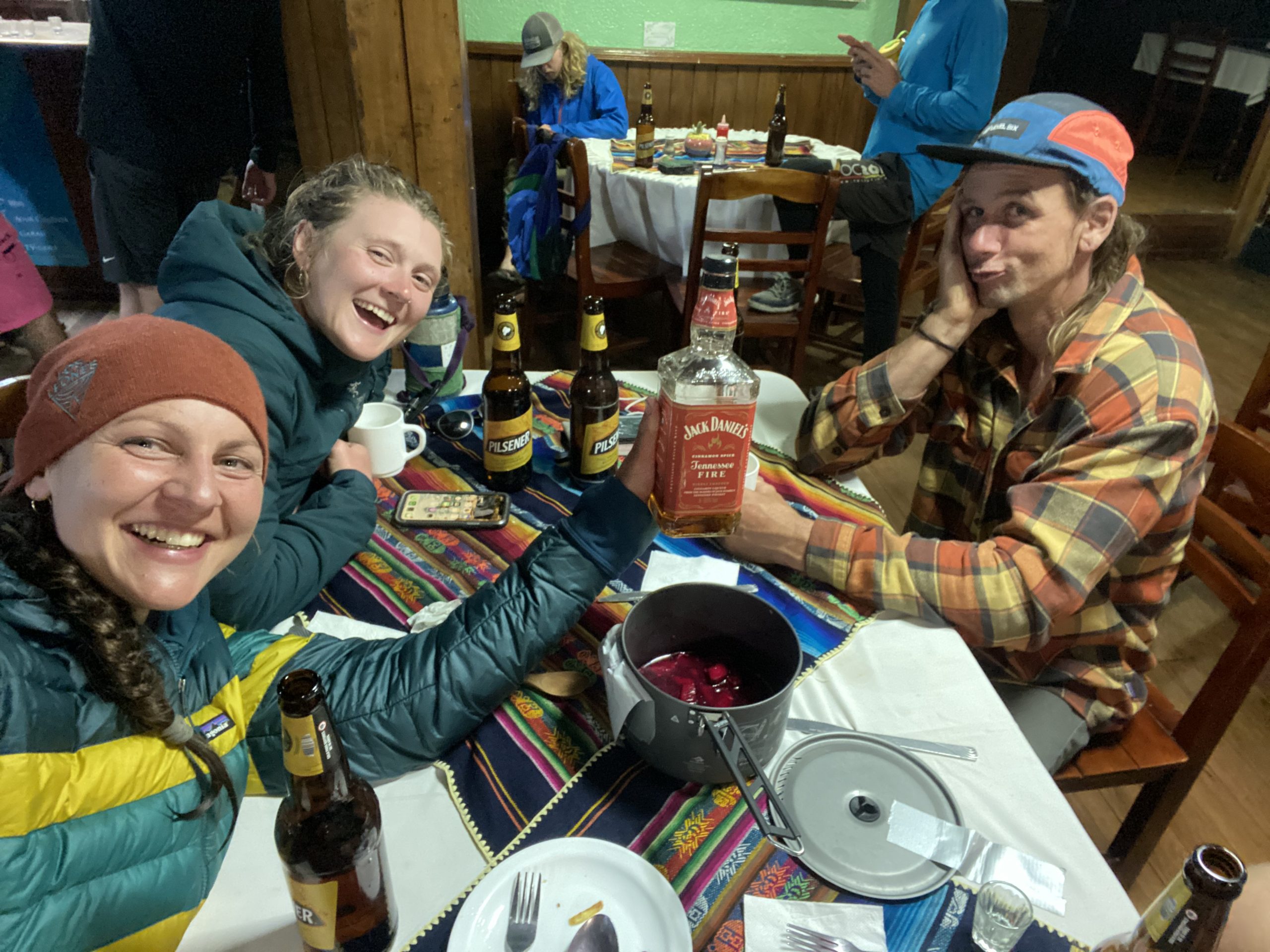We all have them in varying intensities: “Oh, shit! I dropped my phone in the toilet!”; “ Oh, shit! I’m going to be late!”; “Oh, shit! That test is tomorrow!”
“Oh, shit! There’s a wall of water coming downstream directly towards me!”
My most recent, ‘Oh, shit!’ moment was more intense than any other I’ve ever experienced before or ever hope to in the future. In late November, while paddling the Upper Jondachi with two of my favorite paddling partners and friends, the river flashed.
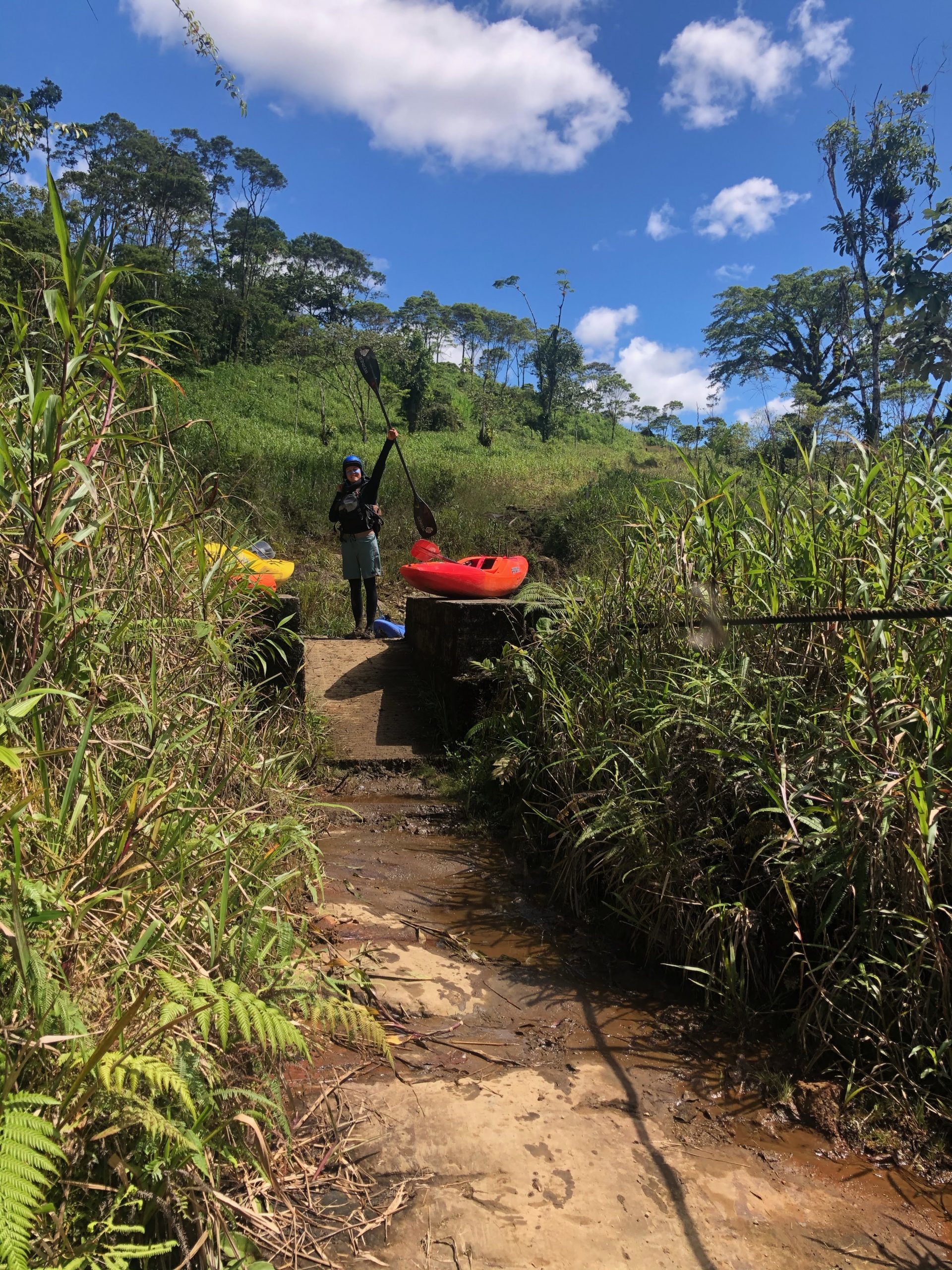
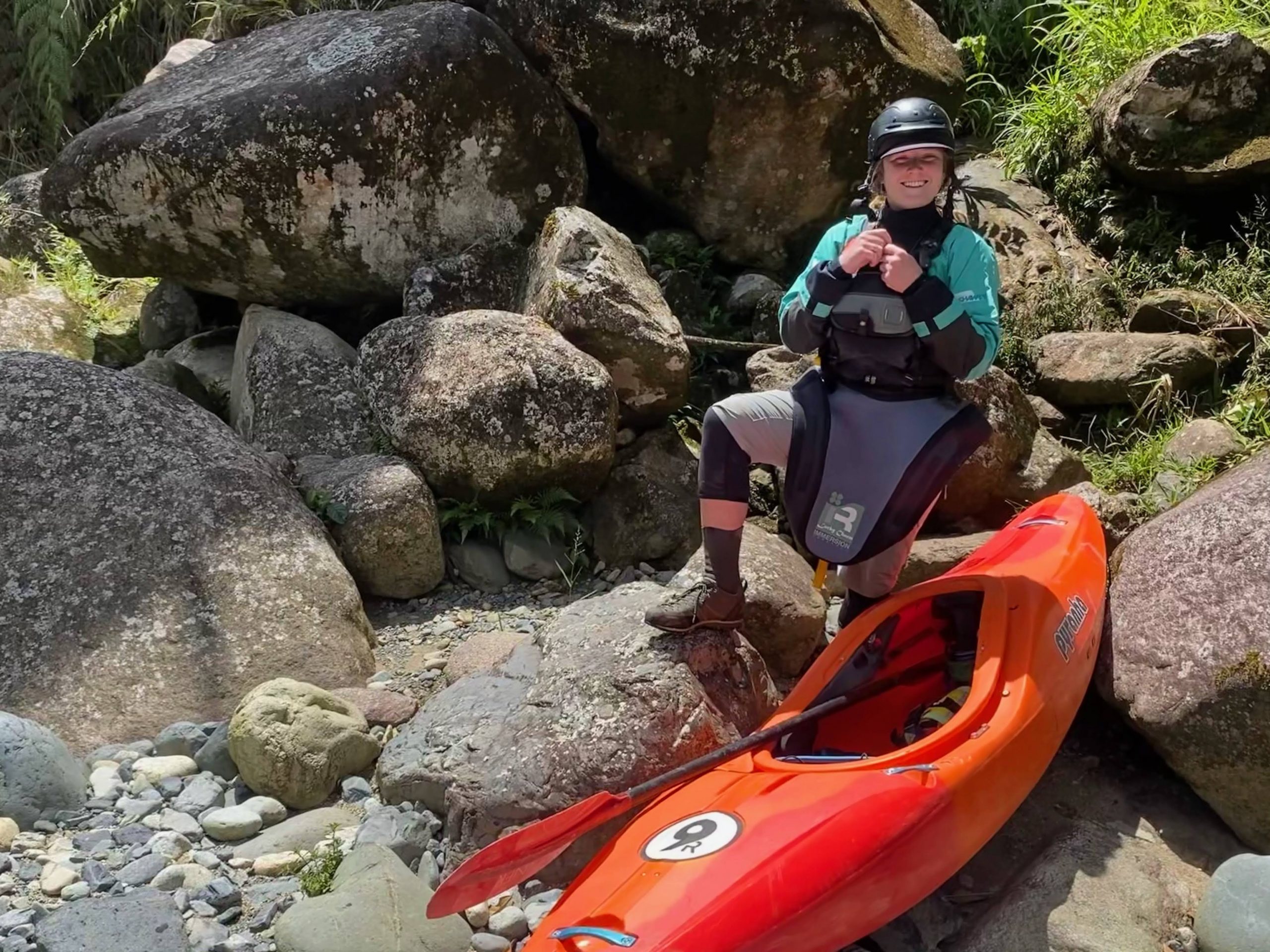
I’ve written a few takeaways from the experience below. Read them or don’t, but I think it’s important to think and talk about the line that we toe every day on the river. Whether “the line” refers to a literal line that we have to be on in a rapid or to the environmental factors we are surrounded by, it deserves to not only be acknowledged but also prepared for in the event that things go wrong.
I’ve reflected on the day quite a bit over the last week and I don’t think I would do anything differently. I haven’t really included any of the details about the flash here because, to be honest, they don’t really matter. If we’re friends, maybe I’ll tell you the story over beers, but they aren’t particularly pertinent to what I want to talk about. We put on in sunshine, it only rained on us for around an hour and, as we hiked up and away from the now furious river along a small, steep, muddy farm trail, the sun was shining again. The rain that caused the river to flash while we were on it came from up high–high enough that we couldn’t see it when we were in the Gorge. Though we were certainly all on edge while paddling in the rain, knowing that you just don’t want it to rain at all while you’re on the Jondachi, I wouldn’t say there were any particular moments that we failed to act in a prudent manner. Maybe we should have gotten off the river immediately when it started raining hard, maybe we should have seen clouds in the sky and not put on. Maybe… but the maybes aren’t very helpful at this point. It happened; we’re all here; and I want to talk about it because realistically, and uncomfortably, it could happen to anyone out there.
Though I feel good about our decisions on the whole, we could have been more prepared for the possibility of something going wrong. The Upper Jondachi is a remote run located between Baeza and Tena. It’s steep, relatively narrow, and currently filled with wood. With a solid crew and the expectation that you’ll take your time picking your way down the river or follow someone who knows the lines really well (and has seen it this season), it’s a beautiful section and well worth the bumpy creek entrance (Urcusiqi) or short hike in through cow manure.
Because of its remote nature, being prepared to spend the night in the jungle in the event of an accident is crucial (this goes for every river that doesn’t have easy and frequent exit points). Between the three of us, we had two inReaches, a phone that had an Ecuadorian sim card, two water filters, a few small snacks, an extra layer of clothing each, a machete, small first aid kit, and two emergency blankets. But then we lost one of the boats in the flood and with it went the machete, first aid kit, one of the inReaches, and Leon’s extra layers. To make matters more interesting, my inReach was dead and the phone didn’t have service. My inReach being dead is a huge mistake on my part; it was charged when I got to Ecuador, but I hadn’t checked it prior to putting on the water–I won’t make that mistake again. I had what appeared to be a communication device but truthfully, in the moment, it was nothing more than a nice-looking, expensive paperweight that provided a false sense of security. Thankfully, it wasn’t a crucial part of our exit from the jungle.
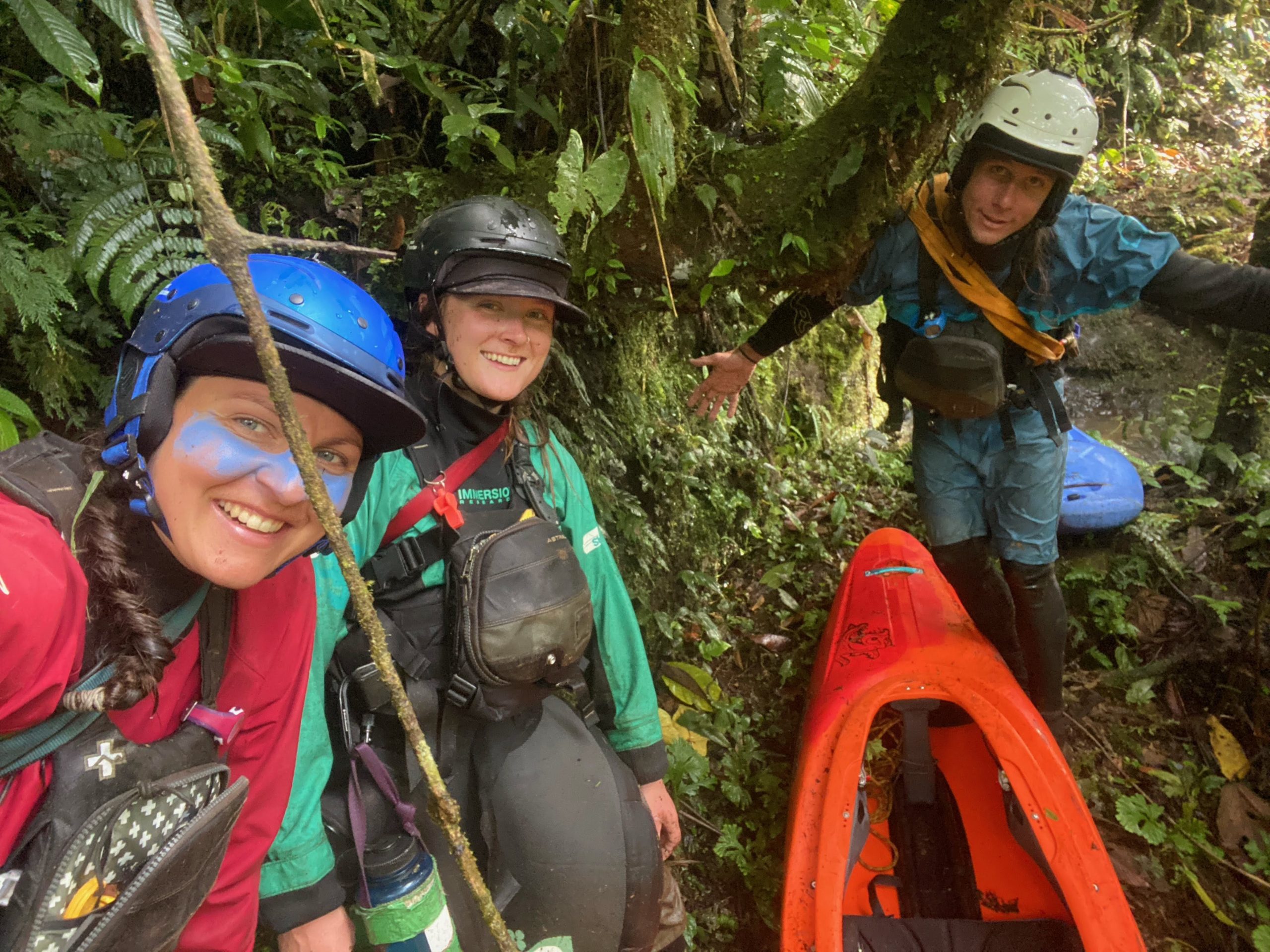
I’ve talked about it with a few people and we’ve come up with a general list of things that we think could be crucial to have in the event of being stuck in the jungle. I think that in an ideal world, every single person in the group has most of these things. I’m really not trying to tell anyone what they should or shouldn’t have with them when they kayak, it’s simply a list of things that I would want to have with me if anything like this ever happened to me again–and I’m sure as hell open to suggestions.
- Emergency Blanket x2 + Paracord
- One to lay on top of and one to create cover for rain. A third would be nice to use as an actual blanket (If everyone has one you’d be set up pretty well)
- The blankets don’t need to have gromets to make them in to shelters, you can bunch the blanket around rocks or branches at the corners, tie the paracord around both the blanket and item and you’ll be able to string it between trees.
- Basic First Aid Kit
- Repair Kit
- inReach (+ phone if it’s a mini along with a power bank)
- I honestly think that in an ideal world there would be more than one inReach in every group. I know they’re expensive, but they simply aren’t helpful if the only person who has one is either no longer with you for one reason or another or the inReach is no longer accessible. I think this goes for any situation-skiing, mountain biking, etc.
- Phone numbers for Search and Rescue as well as any other inReaches your group may have. If you don’t have their unique identifier, you won’t be able to communicate with one another if you get separated. Sometimes it’s more efficient to go directly to S&R in your area rather than pushing the SOS button. Assess your resources and make a call regarding which avenue of rescue you think will be better.
- Having your shuttle driver’s information can also be key–you may be freaking out but, trust me, your taxi driver is, too. Let them know you’re ok if you can. They may also be able to get a rescue moving faster or in the right direction.
- Water Filter
- Extra Food
- More food than you think you’d need
- Extra Layers
- If you’re only wearing shorts, bring pants. The jungle is not kind to exposed skin. Same goes for your top layer.
- Headlamp
- Machete
- The jungle is DENSE and sometimes literally impassible without a tool.
- Fire Starter
- The jungle may be wet pretty much all the time but you never know if you’ll be able to find some dry wood. It gets cold at night, especially when you’re soaking wet.
- Pin Kit
- This should go without saying in my opinion but I put it here because pin kits are not only helpful on the river, but can also be extremely helpful in getting up and out of steep gorges. Check your gear, make sure it isn’t rusted and completely useless. It’s not a horrible idea to throw an ATC (a belay device) in with your gear if you’re in steep terrain (make sure it will work with the diameter of the rope in your throw bag).
- Bug Spray
- Bugs are vicious out there. Honestly, a mosquito net wouldn’t be a horrible thing to bring with you if you have one that packs easily.
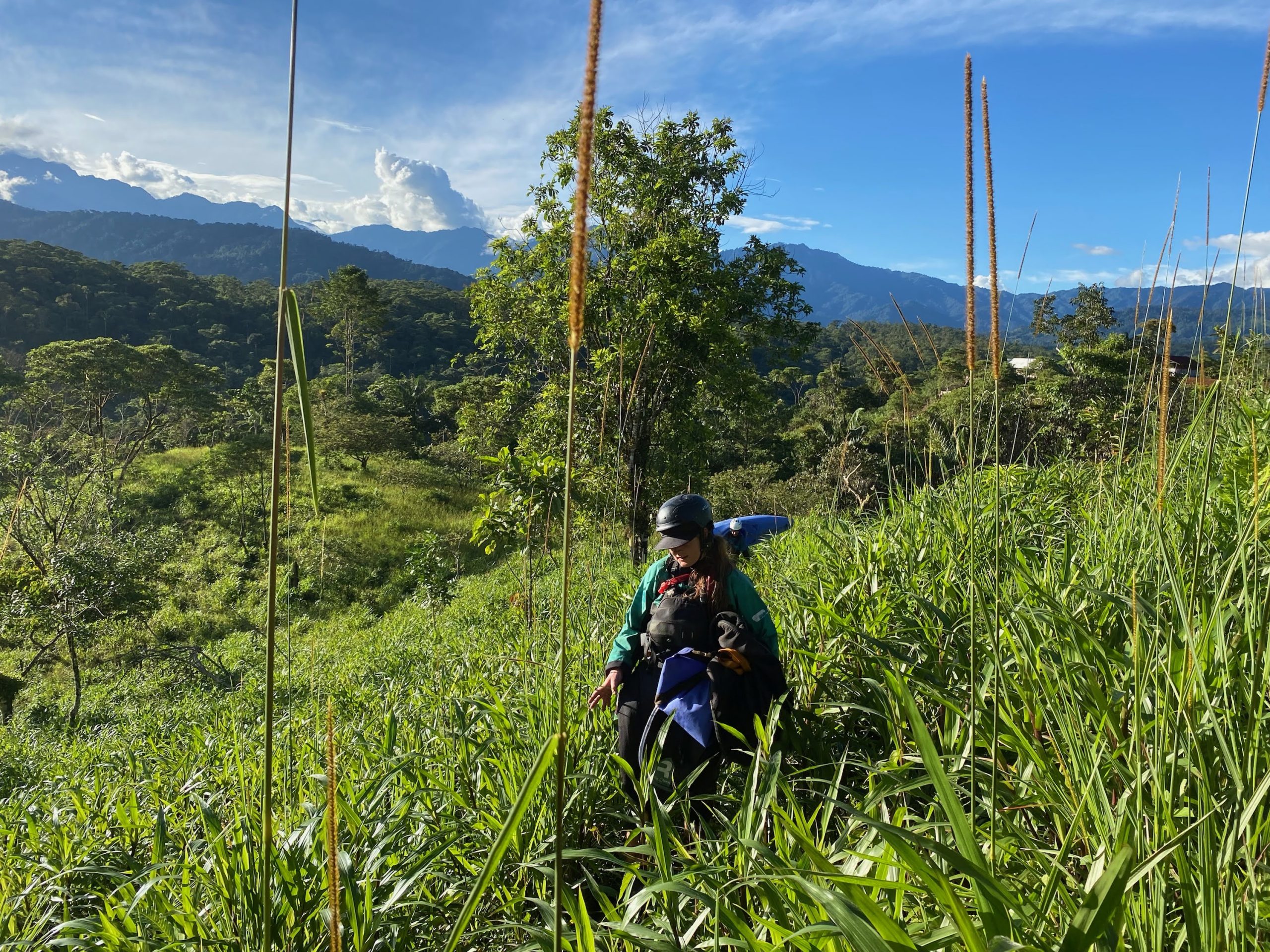
Some main takeaways for me from this experience:
- We had a small group and I think it was a huge advantage for us. Any larger of a group and in that particular location on the river we would have been in much bigger trouble–the eddies around me disappeared in seconds. I’m not saying that you shouldn’t boat with your friends, but it’s something to keep in mind.
- Whistles are a great tool to communicate off the water, too… like when you’re hiking through a jungle and you can barely see 10 feet ahead of you.
- It’s all good and fine to have the most skilled boater carry the most group gear but sometimes that’s the boat that gets lost. If you can, try to spread it out and realistically, everyone should have the basics with them in the event that the group is separated.
- Watch where you put your hands. Some of the trees are literally covered in ants. Don’t get me wrong, I was digging my hands in to the mud to try and gain purchase and sometimes there just isn’t an option to do anything else, but the jungle has some pretty savage insects, animals, and plants. If you can, always look before you put your hands or feet somewhere.
- There is at least one easier point of egress on the Jondach–we hiked out via a tiny farm trail at Tres Huevos. You would never know it was there unless you bush whacked your way about 100 feet up through the jungle to a small plantain field.
- Start early. Weather can change really quickly and if you do find yourself in a situation where you need to hike out, having as much daylight as possible is key.
And, finally, the main takeaway I have is that we got lucky. If the flash had happened just about anywhere else, we almost certainly would have spent the night in the jungle and had there been different circumstances on the river, there is a possibility that we may not have made it back at all. There are a lot of “ifs”, but at this point I’m just thankful that we all made it out and that the only thing we lost was a boat and some gear (The boat was actually found about a week later perched on a rock). There were at least four flash floods in the last two weeks of November/early December–two on the Hollín and two on the Jondachi. Every country presents its own challenges, and Ecuador is a country filled with incredible rivers that flash MUCH more easily than anything in the US–especially those near Tena.
If you read this and disagree with what I have suggested or have suggestions of your own, please let me know–I am learning every day. I do not claim to be an expert on the subject and there are a lot of people with a lot more experience out there.
Have fun out there, love your friends, and be prepared.
